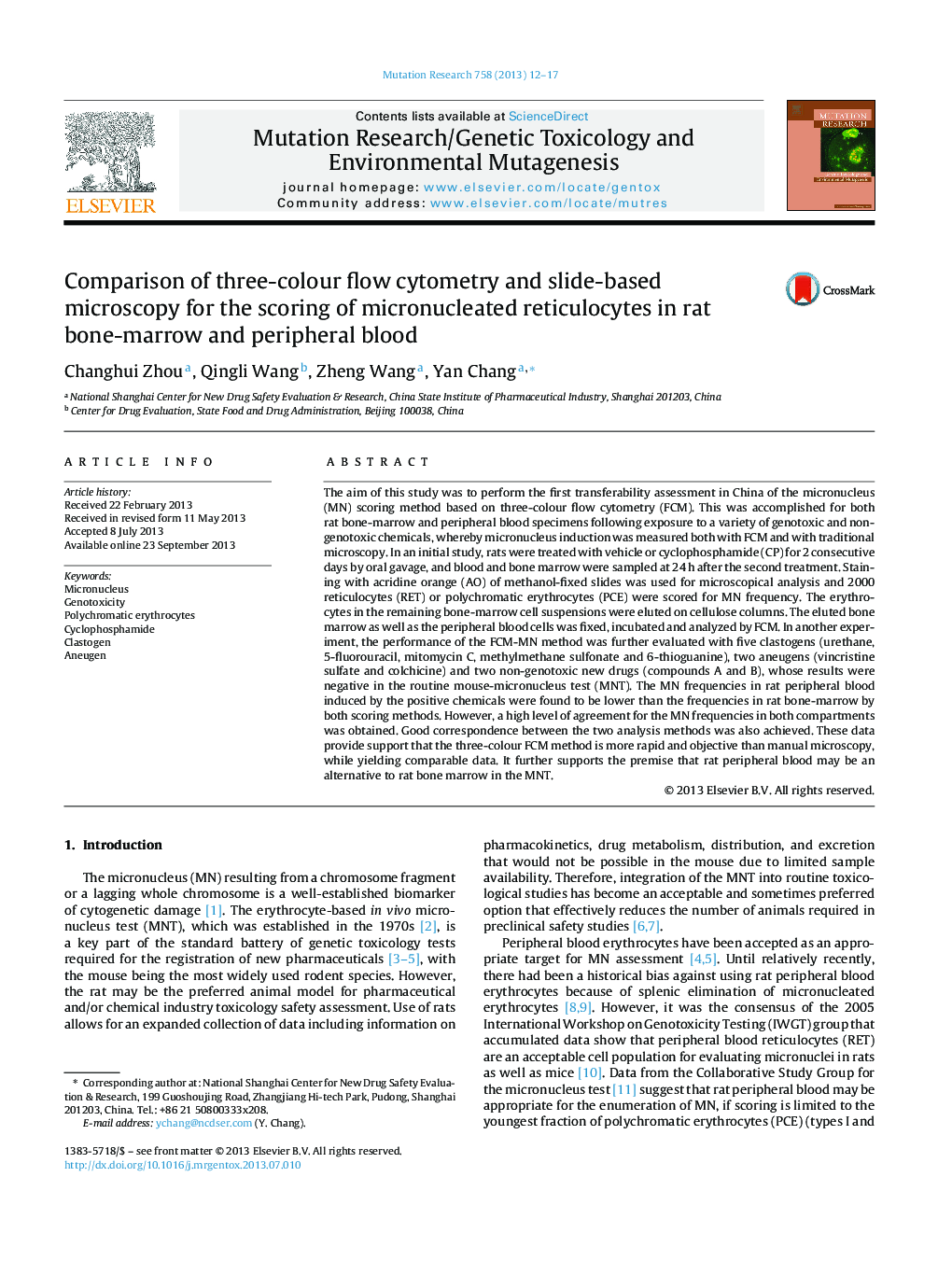| Article ID | Journal | Published Year | Pages | File Type |
|---|---|---|---|---|
| 2148013 | Mutation Research/Genetic Toxicology and Environmental Mutagenesis | 2013 | 6 Pages |
•First assessment of the rat three-colour flow cytometry-based MNT in China.•Rat bone marrow sample preparation for micronucleus determination with FCM.•Three-colour FCM yields data comparable to slide-based microscopy in rats.•Demonstration that rat peripheral blood is comparable to bone marrow for the MNT.
The aim of this study was to perform the first transferability assessment in China of the micronucleus (MN) scoring method based on three-colour flow cytometry (FCM). This was accomplished for both rat bone-marrow and peripheral blood specimens following exposure to a variety of genotoxic and non-genotoxic chemicals, whereby micronucleus induction was measured both with FCM and with traditional microscopy. In an initial study, rats were treated with vehicle or cyclophosphamide (CP) for 2 consecutive days by oral gavage, and blood and bone marrow were sampled at 24 h after the second treatment. Staining with acridine orange (AO) of methanol-fixed slides was used for microscopical analysis and 2000 reticulocytes (RET) or polychromatic erythrocytes (PCE) were scored for MN frequency. The erythrocytes in the remaining bone-marrow cell suspensions were eluted on cellulose columns. The eluted bone marrow as well as the peripheral blood cells was fixed, incubated and analyzed by FCM. In another experiment, the performance of the FCM-MN method was further evaluated with five clastogens (urethane, 5-fluorouracil, mitomycin C, methylmethane sulfonate and 6-thioguanine), two aneugens (vincristine sulfate and colchicine) and two non-genotoxic new drugs (compounds A and B), whose results were negative in the routine mouse-micronucleus test (MNT). The MN frequencies in rat peripheral blood induced by the positive chemicals were found to be lower than the frequencies in rat bone-marrow by both scoring methods. However, a high level of agreement for the MN frequencies in both compartments was obtained. Good correspondence between the two analysis methods was also achieved. These data provide support that the three-colour FCM method is more rapid and objective than manual microscopy, while yielding comparable data. It further supports the premise that rat peripheral blood may be an alternative to rat bone marrow in the MNT.
